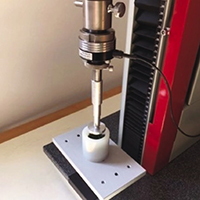Simple and efficient approach for shelf-life test on frozen spinach and parsley

Published:30 September 2021
Abstract Views: 1130
PDF: 565
HTML: 1173
HTML: 1173
Publisher's note
All claims expressed in this article are solely those of the authors and do not necessarily represent those of their affiliated organizations, or those of the publisher, the editors and the reviewers. Any product that may be evaluated in this article or claim that may be made by its manufacturer is not guaranteed or endorsed by the publisher.
All claims expressed in this article are solely those of the authors and do not necessarily represent those of their affiliated organizations, or those of the publisher, the editors and the reviewers. Any product that may be evaluated in this article or claim that may be made by its manufacturer is not guaranteed or endorsed by the publisher.
Similar Articles
- George Ashwehmbom Looh, Fangping Xie, Xiushan Wang, Augustine Ngiejungbwen Looh, Hamdaoui Hind, Grain kernel damage during threshing: a comprehensive review of theories and models , Journal of Agricultural Engineering: Vol. 56 No. 1 (2025)
- Zhi He, Xinting Ding, Wei Hao, Kai Li, Weixin Gong, Zixu Li, Yongjie Cui, Calibration and experiments of discrete element flexible model parameters for kiwifruit stalk , Journal of Agricultural Engineering: Vol. 55 No. 4 (2024)
- Maria Elena Menconi, Massimo Chiappini, Jan L.M. Hensen, David Grohmann, Thermal comfort optimisation of vernacular rural buildings: passive solutions to retrofit a typical farmhouse in central Italy , Journal of Agricultural Engineering: Vol. 48 No. 3 (2017)
- Chiara Cevoli, Angelo Fabbri, Simone Virginio Marai, Enrico Ferrari, Adriano Guarnieri, Estimation of thermal conductivity of short pastry biscuit at different baking stages , Journal of Agricultural Engineering: Vol. 45 No. 2 (2014)
- Vincenzo Bagarello, Vito Ferro, Dennis Flanagan, Predicting plot soil loss by empirical and process-oriented approaches. A review , Journal of Agricultural Engineering: Vol. 49 No. 1 (2018)
- Daniele Torreggiani, Alberto Barbaresi, Francesca Dallacasa, Patrizia Tassinari, Effects of different architectural solutions on the thermal behaviour in an unconditioned rural building. The case of an Italian winery , Journal of Agricultural Engineering: Vol. 49 No. 1 (2018)
- Maria Luisa Amodio, Antonio Derossi, Giancarlo Colelli, Modelling sensorial and nutritional changes to better define quality and shelf life of fresh-cut melons , Journal of Agricultural Engineering: Vol. 44 No. 1 (2013)
- Juquan Ruan, Shuo Liu, Wanjing Mao, Shan Zeng, Zhuoyi Zhang, Guangsun Yin, Fine-grained recognition algorithm of crop pests based on cross-layer bilinear aggregation and multi-task learning , Journal of Agricultural Engineering: Vol. 55 No. 3 (2024)
- Qazeem Opeyemi Ogunlowo, Wook Ho Na, Anis Rabiu, Misbaudeen Aderemi Adesanya, Timothy Denen Akpenpuun, Hyeon Tae Kim, Hyun Woo Lee, Effect of envelope characteristics on the accuracy of discretised greenhouse model in TRNSYS , Journal of Agricultural Engineering: Vol. 53 No. 3 (2022)
- Monica C. M. Parlato, Carlos Rivera-Gómez, Simona M. C. Porto, Reuse of livestock waste for the reinforcement of rammed-earth materials: investigation on mechanical performances , Journal of Agricultural Engineering: Vol. 54 No. 2 (2023)
You may also start an advanced similarity search for this article.

 https://doi.org/10.4081/jae.2021.1199
https://doi.org/10.4081/jae.2021.1199 











